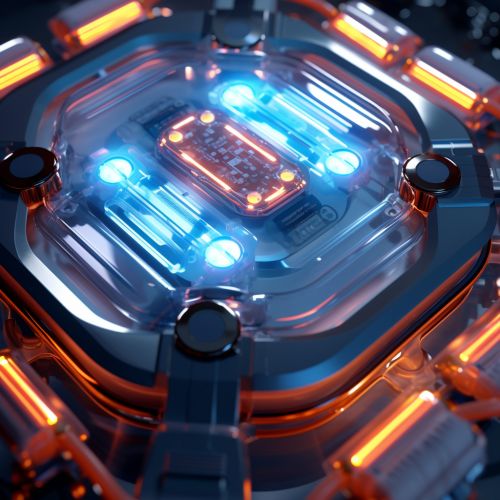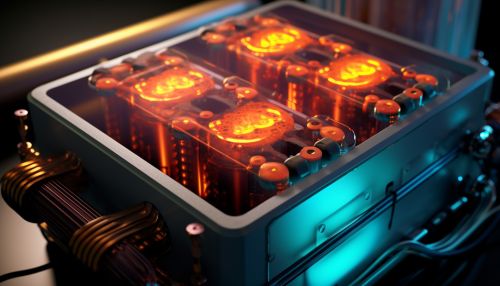Microbial fuel cell
Introduction
A Microbial fuel cell (MFC) is a bio-electrochemical system that drives an electric current by using bacteria and mimicking bacterial interactions found in nature. MFCs can be grouped into two general categories: those that use a mediator and those that are mediator-less. The first MFCs, demonstrated in the early 20th century, used a mediator: a chemical that transfers electrons from the bacteria in the cell to the anode. Mediator-less MFCs are a more recent development dating to the 1970s; in this type of MFC the bacteria typically have electrochemically active redox proteins such as cytochromes on their outer membrane that can transfer electrons directly to the anode.
History
The concept of a microbial fuel cell is attributed to M. C. Potter, who, in 1911, discovered that the amount of electricity generated by the bacteria Escherichia coli was proportional to the amount of oxygen consumed. Potter's work was not immediately followed up; in the 1930s and 1940s, however, the development of microbial fuel cells was pursued by other researchers, notably Barnet Cohen, who demonstrated that the electron acceptor could be oxygen, iron, or other substances.
Design
A microbial fuel cell has several components, including an anode, a cathode, a proton exchange membrane, and an electrical circuit. The anode is the part of the cell where the bacteria reside and release electrons. The cathode, in contrast, is where these electrons are used to reduce oxygen, producing water as a byproduct. The proton exchange membrane allows protons to pass from the anode to the cathode, but prevents the passage of electrons, which must instead travel through the electrical circuit.
Mechanism of Action
The basic mechanism of a microbial fuel cell is simple: bacteria at the anode oxidize organic matter, releasing electrons and protons. The electrons travel through the external circuit to the cathode, where they are used to reduce oxygen to water. The protons, meanwhile, pass through the proton exchange membrane to the cathode, where they combine with the electrons and oxygen to form water. This process generates a current that can be used to power electronic devices.
Applications
Microbial fuel cells have a wide range of potential applications. They can be used to generate electricity from waste water, for example, or to power remote sensors. They can also be used in the production of biofuels, as a tool for environmental monitoring, or as a means of studying microbial ecology and evolution.
Challenges and Future Directions
Despite their potential, microbial fuel cells face several challenges. One of the main challenges is improving their efficiency: currently, microbial fuel cells are less efficient than conventional fuel cells. Another challenge is scaling up the technology for industrial use. However, research in this area is ongoing, and it is hoped that these challenges will be overcome in the future.
See Also


